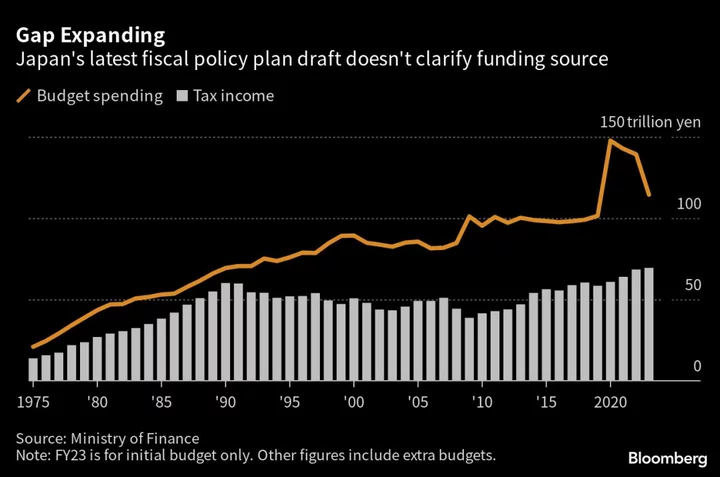Japanese Prime Minister Fumio Kishida proposed a long list of policy targets for this year, as speculation continues over Kishida potentially calling an early election.
The government’s fiscal policy plan didn’t include any figures on the total cost of the suggested policies, or how they will be funded, leaving the question of how these goals will be achieved unanswered.
The Kishida administration added a range of new policies in the draft in different areas where Japan is facing challenges, from childcare, supply chains to the greening of its economy. While the funding source remains unclear the plan may still help maintain Kishida’s recovering approval ratings, as speculation swirls that he may call an election sometime soon.
The proposal is expected to be approved by the cabinet in the middle of the month.
“It would be best for Kishida to call a snap election around the fall when he can start discussions over an additional budget in the extraordinary diet session,” said Toru Suehiro, chief economist at Daiwa Securities. “If Kishida dissolves parliament this month, he can only present the qualitative information in the fiscal policy plan.”
Continuing from last year, the government also stated its goal of seeking fiscal health, although it didn’t mention its target of achieving primary balance by the year ending March 2026 for the second year in a row. The government also said the economy is getting back to normal from the pandemic, suggesting that public funds will be used more for Kishida’s new policy wish list rather than Covid-19 relief.
This year’s policy proposal also reiterated the Bank of Japan’s goal of achieving sustainable 2% inflation, while adding a clause on the need for wage gains, suggesting that the government remains in lockstep with the central bank’s policy guidance.
Childcare Policy
The most significant of the new additions this year is an expansion of support for childcare in order to stop the country’s accelerating population decline. An earlier version of the draft obtained by Bloomberg Wednesday morning showed that the childcare policy details were still being debated, likely reflecting the level of contention surrounding the policies.
The latest draft showed the government intends to put together a plan for the next five years by year end to put children at the center of society. It also said it will support investment into small and medium firms, given that job opportunities and wage levels are the biggest reason behind the decline in the number of children being born.
Last week Kishida announced that the government would spend around ¥3.5 trillion ($25.1 billion) on policies meant to bolster its sliding birthrate. Kishida has warned the country’s population crisis threatens to undermine its ability to function as a society.
Labor Market Reform
Another of Kishida’s policies reflected in the latest proposals is labor market reform, which is intended to increase job mobility and raise wages.
Proposed changes include supporting workers who want to gain new skills, and relaxing the unemployment benefit system for those who leave their jobs for personal reasons, potentially enabling a smoother flow of workers into growth industries. Another is a review of existing retirement benefit systems, making it easier for people to change jobs.
Supply Chain
The draft showed Kishida also aims to promote supply chain reform. Wednesday’s proposal suggested that Japan aims to become the “core” of the global supply chain for critical materials including next generation semiconductors, through further investment in chips and other products.
The government announced Tuesday its revamped chip strategy to triple sales of domestically produced semiconductors by 2030. The plan aims to strengthen efforts to develop and deliver cutting-edge semiconductors that are critical for economic security measures and advanced technology like generative AI.
Green Transformation
Wednesday’s proposal also stated a plan to lure foreign funds for its energy transition, part of Kishida’s push for his “green transformation” vision to address climate change and economic growth. The draft said it aims to strengthen Japan’s role as a global financial hub for energy transition investments in Asia.
Earlier this year, the cabinet approved the nation’s basic plan for tackling climate change, including a subsidy program to promote energy efficiency and an extension of the lifespan of existing nuclear reactors. It has also been looking to sell a new type of sovereign debt to raise 20 trillion yen needed for decarbonization.
--With assistance from Emi Urabe.
(Updates to add further details from the released proposal)

